Serrín as a source of energy
2007/05/01 Kortabitarte Egiguren, Irati - Elhuyar Zientzia Iturria: Elhuyar aldizkaria
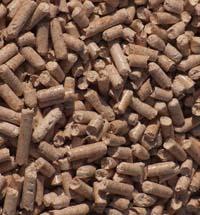
The pellets are pellets of compacted sawdust. They are cylindrical tablets of 6 mm of diameter and 1 to 3 cm of length. They can be for both domestic and industrial uses. Normally the domestic ones are smaller than the industrial ones. These tablets are burned and are mainly used to produce heat in stoves and boilers. That is, they are used in heating systems.
Basque Country exporter
The basic raw material for the manufacture of pellet is sawdust. Material that until recently has been residue. With the aim of solving all this sawdust that accumulates in the sawmills, a project has been launched in the Autonomous Community of the Basque Country in collaboration with the Basque Government. In this project the main sawmills of Bizkaia and Gipuzkoa have been assembled, and in Bizkaia, for example, an installation has been launched to convert the sawdust of the sawmills of the area of Bizkaia into pellet, in the Itzea sawmill of Muxika. The sawdust becomes pellet and is used as fuel.
In principle, most of the pellet produced in the Autonomous Community of the Basque Country may be sold abroad. And here there is hardly any demand, although the demand grows day by day. The following year, approximately 35,000 tons of pellet are expected to be produced in the Autonomous Community of the Basque Country. The goal would be to be consumer instead of pellet exporter, but there is still much to do.
In this work are, among others, Kapelbi and Enerpellet. Kapelbi is responsible for the distribution and implementation of heating systems that work with the sawdust pellet. It offers stove and boilers with the most advanced technology in the market. According to them, pellet stoves are suitable for heating a room, for example, with a power between 5 and 11 kW. In addition they turn on, regulate, recharge and off completely automatically.
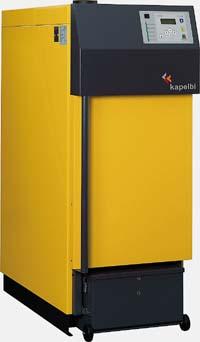
The domestic pellet boilers guarantee the best temperature comfort in any housing. With powers of between 15 and 90 kW they get an adequate response for isolated housing. Large size pellet boilers are designed for blocks of houses, industrial, agricultural, greenhouses, etc. These boilers have between 100 and 3.000 kW of power.
Kapelbi guarantees the supply of fuel through an agreement with the Enerpellet group. Enerpellet is a company dedicated to the production, marketing and distribution of pellet.
As mentioned above, the basic raw material for the manufacture of pellet is sawdust. The sawdust is pressed at an approximate temperature of 80ºC and at that temperature the lignin containing the wood is melted. When it cools, lignin itself is the binder and no adhesives or other substances are needed. Only sawdust. It is, therefore, a clean fuel. In addition, in this process the pellet shines as if it were varnished and becomes denser. (High density, between 1,100 and 1,200 kg/m 3, does not float in water).
Another important feature of the pellet is that it acts as a fluid. That is, it falls from the deposit according to the demand of the boilers. Somehow it can be said that the boiler feeds itself. Therefore, the fuel is fully automated and is able to provide amenities that provide oil and gas.
Better than wood
The pellet has advantages over wood. The pellets are made from remains of carpentry or pruning. In addition, it is much better dosed than wood and generates less carbon monoxide.
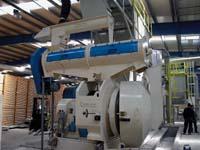
Burning is more controllable and pellet boilers, for example, often have a yield of 93-95%. The performance of a normal lower fire is usually around 50-60%. That is, if 10 kg of wood are meten, approximately 5-6 kg are used. The rest is lost by fireplace and ashes, among others. In the case of the pellet, approximately 9 kg is used. Likewise, the amount of ashes generated is low.
This whole issue of performance is related to humidity. And it is that the pellet does not have the same humidity as the wood. Its humidity is guaranteed and is usually less than 10%, while with the degree of humidity of the wood there is no such certainty. For a good pellet its humidity should be less than 10%. In Spain there is still no regulations on the quality of the pellet. However, experts are developing a European standard on pellet quality.
The pellets of sawdust are cleaner than the wood itself. And, at least in this sense, no dust or dirt enters the home when the pellet is used as fuel. It also needs less space, about a quarter.
Competition with fossil fuels
It is competitive not only with respect to wood, but with other fuels. It is cheaper than diesel and propane compared to fossil fuels. It can be said to be somewhat cheaper than natural gas. However, the installation itself, that is, the boilers of pellets, are more expensive. The installation for domestic use is costly and consumption is not enough to be profitable quickly. "However, in industrial uses, despite the lack of facilities, high consumption makes it quickly profitable," explains Aitzol Telleria, technical director of Enerpellet.
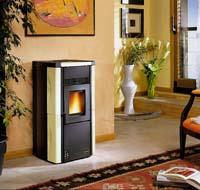
However, despite its cost, it offers greater security. Among other things, there is no risk of gas leakage. It is easier to receive from any spill and does not feed with a spark. The gas, however, has enough a spark to burn. On the other hand, in the case of pellet, the carbon dioxide balance is neutral (similar to that of biomass). Consequently, global warming does not increase.
It has therefore infinite advantages. For this reason, its consumption is already quite socialized in the most advanced countries. Distributed in tanker trucks north and central Europe, it is used in domestic heating, industrial boilers and power generation plants.
"Sweden, for example, is a large producer of pellets, but it also has a great demand. It is currently being imported. In the case of Austria, we could say that production and demand go quite a bit on par," says Aitzol Telleria. In the Autonomous Community of the Basque Country, the presence of tanker trucks on the roads is still not usual, but in the future it is possible that the consumption of pellets increases both in homes and in the Basque industry.
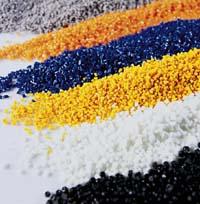


Gai honi buruzko eduki gehiago
Elhuyarrek garatutako teknologia



